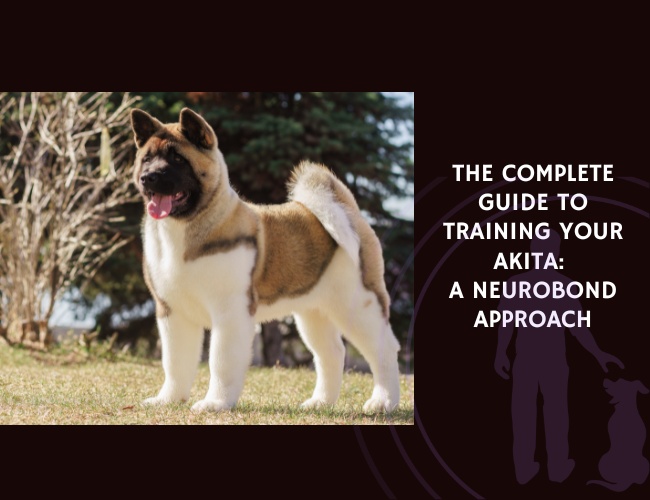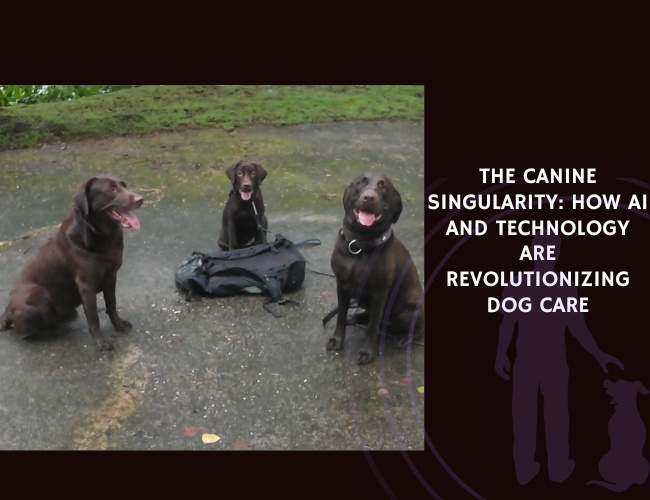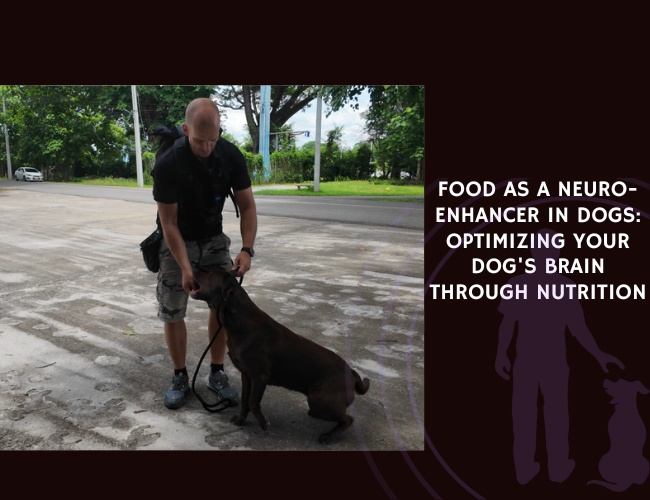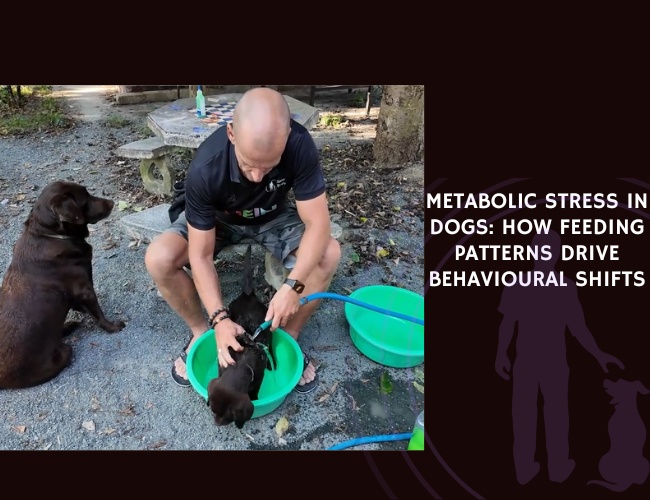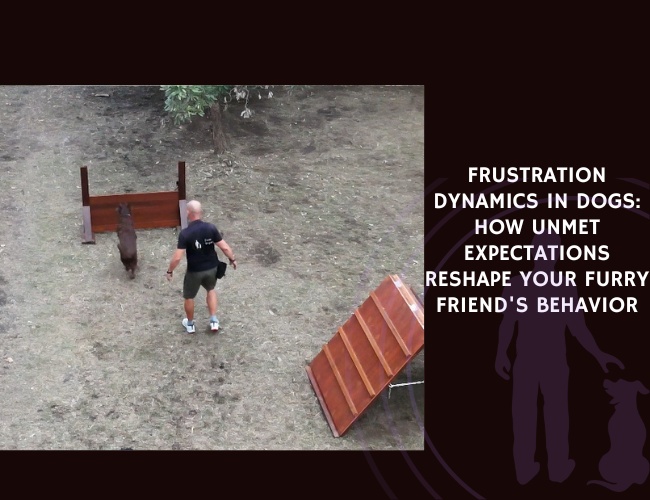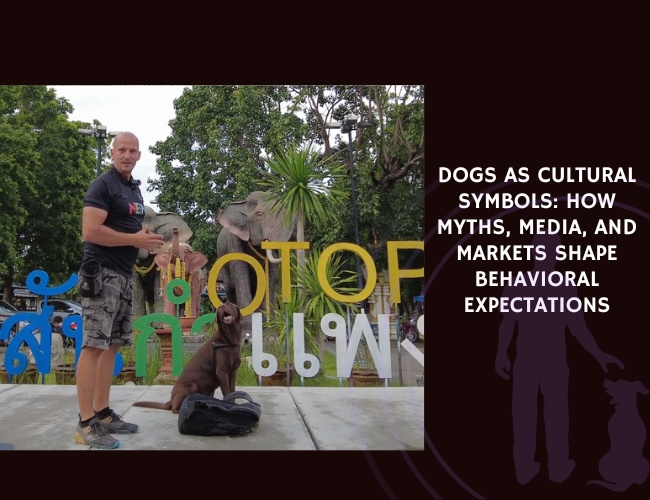Introduction
The Akita stands as one of Japan’s most revered breeds, a living monument to loyalty, courage, and independent thinking. These magnificent dogs, once guardians of Japanese nobility and hunters of formidable game, bring a unique blend of intelligence and self-possession that demands a training approach as sophisticated as they are. If you’ve welcomed an Akita into your life, you’ve chosen a companion whose loyalty runs deeper than most can imagine—but whose independent spirit requires understanding, not domination.
The NeuroBond approach recognizes what makes your Akita exceptional: their analytical mind, their fierce loyalty, and their instinctive need to think before they act. Rather than forcing compliance, we’ll guide you through building a connection that honors their nature while creating the harmonious relationship you both deserve. This isn’t about making your Akita obedient—it’s about helping them choose cooperation through trust and understanding.
Character & Behavior
Understanding Your Akita’s Core Nature
Your Akita carries the wisdom of ancient Japanese bloodlines, manifesting in behaviors that might puzzle trainers accustomed to eager-to-please breeds. They are intelligent, self-possessed, and courageous—never hyperactive, yet always alert to their world. This isn’t a dog who will fetch endlessly for your amusement; this is a thinking partner who evaluates each situation with the gravity of their ancestors guarding imperial palaces.
The Independent Thinker: Your Akita’s intelligence manifests differently than in breeds selected for immediate compliance. Ranking 54th in traditional obedience metrics tells only part of the story—these dogs possess the cognitive abilities of a 2 to 2½-year-old child, but they apply this intelligence through independent analysis rather than rote response. When your Akita pauses before obeying a command, they’re not being stubborn; they’re processing whether your request makes sense in the current context.
Loyalty as a Living Force: The loyalty of an Akita isn’t passive devotion—it’s an active, protective force that shapes every interaction. This loyalty makes them accepting of all household members but naturally aloof with strangers. In the NeuroBond framework, we don’t suppress this protective instinct; we channel it through trust, teaching your Akita that you’re capable of assessing threats, allowing them to relax their vigilance.
Territorial Intelligence: Research shows that 70% of human-directed aggression in Akitas involves visitors on their territory. This isn’t random aggression—it’s contextual, protective behavior rooted in centuries of guardian instincts. The NeuroBond approach acknowledges this as valuable feedback about your dog’s sense of responsibility, not a problem to be punished.
Emotional Depth and Regulation
Your Akita experiences a rich emotional life, including joy, fear, disgust, and subtle variations like excitement and love. Remarkably, less than 10% of Akitas suffer from separation anxiety—the lowest among ancient breeds. This emotional stability provides a solid foundation for NeuroBond training, where we build on their natural confidence rather than creating dependencies.
Training Philosophy Integration
Why Traditional Methods Fall Short
Traditional obedience training often fails with Akitas because it assumes all dogs are motivated by praise and treats alone. Your Akita’s “what’s in it for me?” attitude isn’t defiance—it’s the mark of a dog who thinks strategically. When an Akita takes 25-40 repetitions to learn a new command and obeys known commands 50% of the time, they’re not slow learners; they’re selective executors who need compelling reasons to comply.
The NeuroBond Advantage
The NeuroBond philosophy aligns perfectly with the Akita temperament because it:
Honors Natural Instincts: We don’t suppress your Akita’s protective or analytical nature—we guide these instincts toward constructive outcomes. When your Akita naturally positions themselves between you and a stranger, we acknowledge this as protective positioning, then teach them to check in with you for guidance.
Creates Connection Over Control: Rather than demanding blind obedience, we build a relationship where your Akita chooses proximity and alignment. This invisible leash becomes more powerful than any physical restraint because it’s built on trust and mutual respect.
Embraces Non-Stereotypical Behavior: Your Akita’s tendency to approach problems from different angles each time isn’t a training failure—it’s cognitive flexibility. The NeuroBond method celebrates this by creating learning environments where multiple solutions are acceptable, as long as the core objective is met.
Developmental Stages
The Critical Window (4-16 Weeks)
The socialization period from 4 to 12 weeks marks your Akita puppy’s most receptive phase for shaping future behavior. During this critical window, every positive experience builds neural pathways that influence adult temperament. The NeuroBond approach maximizes this period not through overwhelming exposure, but through carefully curated experiences that build confidence.
Week 4-8: Foundation Building
- Gentle handling that respects the puppy’s developing autonomy
- Introduction to household sounds and textures
- First lessons in checking in with humans for reassurance
Week 8-12: Expanding the World
- Controlled meetings with well-socialized dogs
- Brief, positive encounters with various humans
- Introduction to different environments while maintaining secure base behavior
Week 12-16: Solidifying Patterns
- More complex social situations with built-in success
- Beginning of boundary setting within the NeuroBond framework
- Establishing communication patterns that will last a lifetime
Beyond Puppyhood: The Continuous Journey
By 5-6 months, your Akita is ready for structured learning, but remember—their brain development continues well into adulthood. Adult Akitas who missed early socialization can still learn through the NeuroBond method’s emphasis on relationship over rote training. We take a “slow and steady” approach, introducing new experiences gradually while honoring their developed worldview.
Core Training Principles
Principle 1: Let Your Akita Be
Your Akita’s nature isn’t something to overcome—it’s the foundation we build upon. When they pause at the door, surveying the environment before exiting, we don’t rush them. This natural cautiousness is their gift to you, a moment of assessment that could prevent problems. We reward the check-in glance they give you during this pause, reinforcing that you’re partners in navigation.
Principle 2: Instinct as Teacher
Traditional training might see your Akita’s prey drive as problematic when they chase squirrels. The NeuroBond method sees opportunity. We use this instinct to teach recall by becoming more interesting than the prey, not through force, but through games that satisfy the chase instinct while building connection. Your Akita learns that returning to you leads to engaging activities that fulfill their hunting heritage.
Principle 3: Context Creates Behavior
Your Akita’s behavior is never random—it’s always contextual. The dog who ignores your “sit” command in the park might perfectly execute it at home. This isn’t disobedience; it’s environmental processing. In new contexts, your Akita needs time to assess safety and establish patterns. We work with this tendency by:
- Practicing commands in gradually increasing distractions
- Allowing processing time in new environments
- Rewarding thoughtful responses over quick compliance
Principle 4: The Invisible Leash
The ultimate goal isn’t a dog who obeys from fear or mechanical conditioning, but one who chooses proximity through trust. Your Akita’s natural independence makes this voluntary connection even more meaningful. When achieved, you’ll have a companion who maintains awareness of your position not because they must, but because they choose to include you in their decision-making process.
Loyal. Sovereign. Selective.
Your Akita isn’t ignoring you—they’re evaluating you.
Every command you give runs through a filter of instinct, loyalty, and logic. They don’t obey automatically because they were never bred to. They obey when it’s earned.
Connection replaces coercion.
Traditional training demands obedience; NeuroBond inspires alignment. When your Akita checks in with you instead of guarding the door, it’s not submission—it’s partnership.
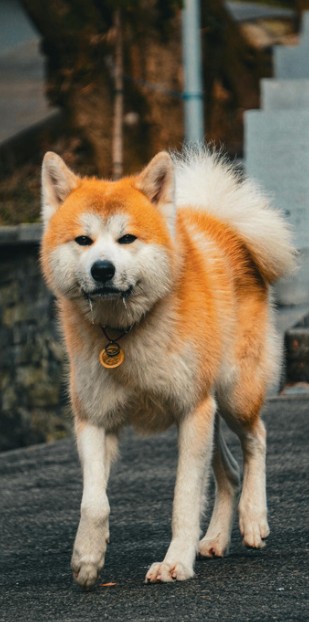

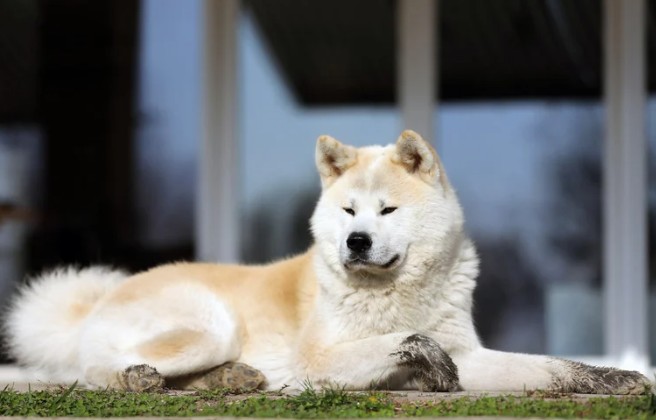
Respect creates the invisible leash.
The deeper your bond, the less you need to ask. Your Akita stays near not because they’re controlled—but because they’ve chosen to walk beside you.
Practical Training Applications
Leash Walking: A Dance of Mutual Respect
Traditional heel training often fails with Akitas because it suppresses their natural surveying behavior. The NeuroBond approach teaches position awareness without rigidity:
Step 1: The Standing Solution When your Akita pulls, simply stop and stand on the leash (not yanking, just preventing forward movement). Most Akitas will naturally sit or lie down within 30 seconds—this self-discovered solution gets rewarded immediately.
Step 2: Check-In Rewards Every time your Akita glances back at you during walks, mark and reward this behavior. You’re building the invisible leash, teaching them that awareness of you brings good things.
Step 3: Environmental Processing Allow brief stops for your Akita to survey their environment. Use these moments to practice the “let’s go” cue, making movement a mutual decision rather than a demand.
Managing Protective Instincts
Your Akita’s territoriality isn’t a flaw—it’s a feature that needs proper channels:
Doorway Protocol:
- Teach your Akita to automatically sit when someone approaches the door
- Reward them for looking at you for guidance
- Give them a specific job—”go to your place”—that satisfies their need to monitor while keeping them managed
Visitor Introduction Process:
- Allow your Akita to observe new people from a distance first
- Let them approach in their own time
- Reward calm, evaluative behavior over forced friendliness
- Never punish aloofness—it’s their natural state with strangers
Addressing Challenges
The “Selective Hearing” Issue
When your Akita “ignores” commands, they’re often processing whether compliance makes sense in the current context. Rather than escalating:
- Evaluate the Environment: What’s different from training contexts?
- Check Your Energy: Are you tense, frustrated, or unclear?
- Make It Worthwhile: What value does compliance offer in this moment?
- Reset and Rebuild: Sometimes backing up to an easier version rebuilds success momentum
Same-Sex Aggression Management
With 59% of Akitas showing dog-directed aggression, particularly toward same-sex dogs, management requires strategy:
Prevention Through Socialization:
- Early, positive experiences with well-matched playmates
- Supervised interactions that end on positive notes
- Teaching disengagement as a rewardable behavior
Adult Management:
- Acknowledge this as breed tendency, not failure
- Use distance and barriers for safety
- Focus on neutral coexistence rather than forced friendships
- Build strong “look at me” cues for redirection
The Independence Challenge
Your Akita’s independent nature means they might not perform tricks for entertainment or repeat behaviors endlessly. This isn’t a training failure—it’s a characteristic to work with:
- Keep training sessions short and meaningful
- Vary exercises to maintain interest
- Connect commands to real-life applications
- Celebrate thoughtful compliance over mindless repetition
Advanced Applications
Working With Instincts
Your Akita’s hunting heritage provides rich training opportunities:
Scent Work: Channel their tracking instincts into finding games that build confidence and provide mental stimulation.
Protection Sports: For suitable dogs, sports like IPO can provide appropriate outlets for protective instincts under controlled conditions.
Therapy Work: Despite their aloofness with strangers, some Akitas excel in therapy work where their calm, stable nature provides comfort without overwhelming neediness.
Building Complex Behaviors
Through the NeuroBond method, complex behaviors emerge from simple connections:
Automatic Check-Ins: Your Akita learns to regularly look at you for information, creating opportunities for subtle guidance.
Environmental Confidence: By honoring their need to assess, we build dogs who can calmly navigate new situations.
Cooperative Decision Making: Your Akita learns that your suggestions usually lead to positive outcomes, increasing voluntary compliance.
Senior Akita Considerations
Maintaining Connection Through Change
As your Akita ages, physical changes might affect training:
- Adjust expectations for physical responses
- Maintain mental stimulation through puzzle-solving
- Honor increased selectiveness about activities
- Celebrate the deepened bond that comes with years of mutual respect
Cognitive Considerations
Senior Akitas might show:
- Increased independence in familiar environments
- Stronger preferences for routine
- Selective response to commands based on comfort
- Deeper bonding with primary family members
These aren’t problems—they’re the culmination of a lifetime of experiences. The NeuroBond connection you’ve built becomes even more precious as your Akita chooses to spend their golden years in voluntary closeness.
Conclusion: Is This Approach Right for You?
The NeuroBond method of training your Akita isn’t for everyone. It requires:
- Patience to allow your dog to process and choose
- Respect for their independent nature
- Commitment to building relationship over demanding obedience
- Understanding that success looks different than with eager-to-please breeds
- Appreciation for a thinking partner rather than an obedient servant
If you’re ready to embrace these requirements, you’ll discover something remarkable: an Akita who chooses to walk beside you not because they must, but because they’ve evaluated all options and decided you’re worth following. This voluntary partnership, built on mutual respect and understanding, creates a bond deeper than any forced obedience could achieve.
Your Akita will never be a Golden Retriever, eager to please for praise alone. But they will be something perhaps more precious—a dignified companion who offers loyalty earned through understanding, protection given through trust, and affection that’s chosen, not commanded. In the end, isn’t that the relationship we all truly seek with our dogs? 🐾
The journey of training your Akita through the NeuroBond method is really a journey of mutual discovery. You’ll learn to see the world through ancient, wise eyes, while your Akita learns that human partnership can enhance, not diminish, their autonomous spirit. Together, you’ll write a story of connection that honors both species—a true meeting of minds and hearts across the bridge of understanding. 🧡

